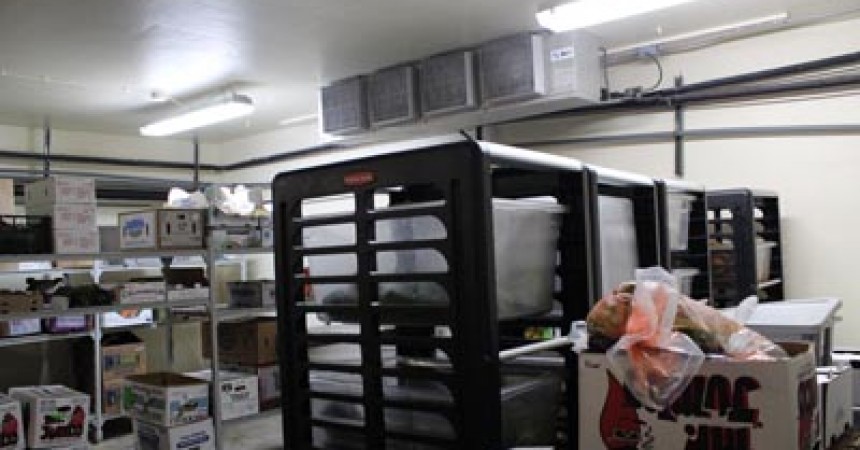Zoo InternQuest is a seven- week career exploration program for San Diego County high school juniors and seniors. Students have the unique opportunity to meet professionals working for the San Diego Zoo, Safari Park, and Institute for Conservation Research, learn about their jobs, then blog about their experience online. Follow their adventures here!
Ms. Deborah Lowe is the Supervisor for Nutritional Services at the San Diego Zoo. Working for the San Diego Zoo for over 29 years and in the Nutrition Department for over 12 years, Ms. Lowe works hard to ensure the nutrition of every animal in the Zoo is exceptional. Along with Ms. Lowe’s seven coworkers, the Forage Warehouse is in charge of ensuring every animal is properly fed and getting the correct amount of nutrients to keep them happy and healthy.

Interns got to experience one of the walk-in refrigerators used to keep various foods, like fruits, and vegetables, for the many different animals in the Zoo. The black rolling carts are brought out to the main center of the Forage Warehouse and used for prepping the various fruits and vegetables to go out into the zoo. Many of the fruits and vegetables you will see are in fact brands you could find at your local market or grocery store. This is because all of the food delivered to the zoo is in fact restaurant grade food. After leaving the zoo, the delivery service then sends their food to many of the restaurants in the San Diego area.

This is an old emergency axe kept in one of the walk-in freezers, in case someone was accidently locked inside. While they cannot break through the metal doors to the walk-in freezers, the axe could be used to help pry open the door. Emergency methods have since been improved upon, and updated by adding an emergency alarm in the freezers.

This is a special area where meat is prepped for feeding to the various carnivores in the Zoo. Such tools for preparing meat include knives, band saws, meat cubers, and various other machineries. Some carnivores kept in the Zoo include lions, tigers, and polar bears. The band saw is used for cutting many of the frozen meats that are too hard to cut by hand.

My fellow intern Lucas, suffering from the frigid cold inside one of the Zoo’s 30 degree walk-in freezers. Other frozen items include frozen meats, bones, bird nectar, and fish food.

King worms kept in convenient cups for distribution to the bird species kept throughout the Zoo. The king worms are mixed with variety of other insects to ensure the birds are consuming the optimal amount of nutrients.

Ms. Lowe, posing in the grain room. Things kept in the grain room include dog kibble, pine shavings, popcorn, bird seeds, and various specialized foods for different species of animals in the Zoo.

My fellow interns, inside the grain room, taking notes while Ms. Lowe explains the different types of feed stored in the warehouse, and the nutritional application each feed has to each different species in the Zoo. (From left to right Emily, Claudia, Lucas, Celine, Brianna Julianna, and Katie.)

The Zoo’s hay loft houses Sudan, Bermuda, and alfalfa hay are all kept. They receive a shipment of 300 new bales every five weeks. That’s 27,000 pounds! Zoo animals that consume the hay include various hoof-stock, hippos, and elephants.
Devin, Photo Team
Week Two, Winter Session 2015


